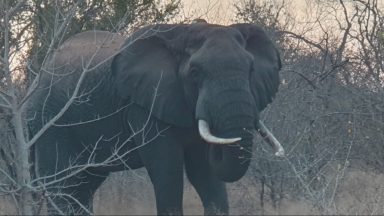This lifeless set of elephant bones holds a wealth of stories about these behemoths of the bush. The sadness that is felt when coming across a set of bones, imagining an elephant’s life lost, can be offset by the fact that, even in death, every animal plays a vital role in the ecosystem. Nothing is ever wasted in nature. In fact, animal deaths are vital for a healthy ecosystem. Such an enormous carcass such as this one from an elephant – which might have weighed up to 7 tonnes in life – has provided a bountiful food supply for many others, such as hyena, lion, vultures and a host of others along the food chain. Creatures from microbes to big cats will all have had their turn to benefit from the feast. What is more amazing is that, even after all the meat has been taken off the bones by other creatures, the carcass site is ‘useful’ to the environment. It actually becomes a more fertile patch of ground due to microbes that release nutrients into the soil from the decomposing animal.
Interestingly, when an elephant dies, it is common for other elephants to travel to mourn its death. From the air it is common to see worn pathways across the veld radiating out from the dead animal, and these areas have been known to be visited for years to come. What this means is that a carcass site becomes more fertile, as the elephant dung deposited from visiting elephants sustains dung beetles and other life. So, what at first seems like a sad scene is actually still part of an ongoing story of a changing and developing ecosystem.
Elephants are vital for the biodiversity and health of transfrontier conservation areas. They stimulate biodiversity by trampling and, thereby, opening up space in overgrown areas. This allows other species of grasses and smaller saplings to thrive. The new open spaces create pathways for other species and expose grasses and flora for these grazers to eat, food that would otherwise have been inaccessible. In addition, the proliferation of other insects attracted to elephant dung also provides food for birds and bats, which in turn helps spark the increase in other species, known as ‘succession’.
Peace Parks and partners work tirelessly to manage elephant populations, to translocate them into protected areas and to re-establish their ancient migration routes, so that these magnificent creatures can continue to play their part in the ongoing story of southern Africa.


